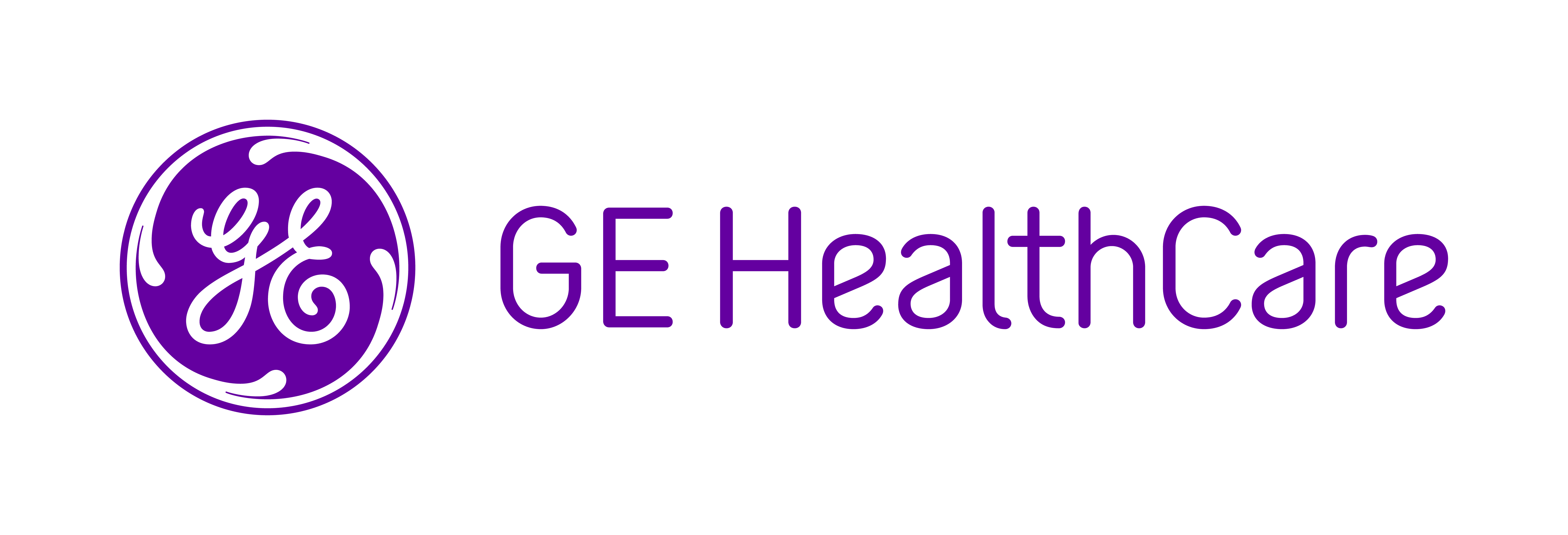|
Radiology in 2040 | Leqembi’s Imaging Impact
January 9, 2023
|
|
|

|
|
Together with
|

|
|
|
“The present is not sustainable, and yet again, radiology is at a crossroads.”
|
|
James A. Brink and Hedvig Hricak forecasting that radiology’s current challenges will be replaced by a very different set of challenges in the coming years.
|
|

|
|
A new Radiology Journal editorial shared a radical vision for how the specialty will operate in 2040, warning that “seismic” changes will require radiologists to overhaul their roles in order to thrive, or even stay relevant.
Here’s what the authors expect:
Super Reporting – Radiology reporting will become far more automatic and dynamic, as reports embrace multimedia formats, become far more accessible and patient-friendly, and integrate into automatic follow-up systems.
Disease Focus – The growth of at-home care and the emergence of mobile and self-examination imaging technologies will force radiology workflows to become organized by diseases, rather than by patients’ “location” (ED, ICU, etc.).
Inevitable AI – “AI will not replace radiology,” but it will “profoundly affect [radiologists’] relevance and workflow” as algorithms become more comprehensive, autonomous, and accurate.
The AI Threat – AI will eliminate many current radiologist tasks, but its greatest threat to radiology would come from referring physicians using imaging AI independently.
Multi-Diagnostics – The rise of non–imaging precision diagnostics (ie, “liquid biopsies”) and multimodal/multiomic diagnostics will reduce imaging’s role in disease detection, and lead to a more-integrated diagnostic and treatment planning process.
Future Therapy – Major advances in precision imaging, image-guided technology, and theranostics would allow radiology to increase its clinical value by owning image-related procedures.
Those are some major changes, and would require radiologists to take similarly major actions in order to thrive in 2040 and beyond:
- Understand that image interpretation will become a commodity, and maybe “obsolete”
- Maintain a “laser-sharp” focus on adding value across the healthcare continuum
- Actively embrace radiologists’ role as AI’s primary users, owners, and managers
- “Extensively cultivate” radiology’s interventional and theranostics capabilities
The Takeaway
It’s impossible to accurately predict how medicine will evolve over the next two decades, and there’s surely plenty of readers who are growing tired of obsolescence warnings.
That said, the authors are very well-respected and each of their forecasts can be directly linked to today’s emerging trends, suggesting that radiologists who follow their advice might be more likely to “thrive” in 2040 regardless of how the future unfolds.
|




|
|
GE HealthCare’s New Era
GE HealthCare completed its long-awaited spinoff last week, emerging as an $18B precision care company dedicated to making hospitals more efficient, clinicians more effective, therapies more precise, and patients healthier. Learn more about the new era of GE HealthCare.
|
|
- Leqembi Approved: Eisai’s Leqembi Alzheimer’s drug gained FDA approval last week, creating renewed optimism among Alzheimer advocates in the wake of Biogen’s failed Aduhelm launch in 2022. Leqembi could drive a neuroimaging surge if it gains Medicare coverage, as it requires patients to undergo a PET scan for diagnosis and continued brain MRIs for treatment monitoring.
- FAPI-PET Beats Conventional PET: A new JNM study highlighted 68Ga-FAPI PET’s tumor staging advantage over conventional PET. Researchers analyzed data from 324 patients who underwent 68Ga-FAPI imaging including 237 patients who also received 18F-FDG PET, finding that 68Ga-FAPI achieved higher uptake than 18F-FDG with pancreatic cancers (SUVmax: 13.2 vs. 6.1), sarcoma (14.3 vs. 9.4), and with pancreatic cancer metastatic lesions (9.4 vs. 5.5).
- Perspectum Adds $36M: Perspectum secured a $36M Series C round (total funding now $120M), revealing plans to scale its U.S. operations and expand the reach of its flagship LiverMultiScan MRI visualization and quantification solution. Perspectum will also use the funding to develop new products for multiorgan inflammatory conditions and urology.
- Dual-Tracer PET/CT: A new European Radiology study found that dual-tracer 68Ga-FAPI-04 and 18F-FDG PET/CT improves sensitivity for evaluating gastric cancer distant metastases. Among 62 gastric cancer patients, dual-tracer PET/CT significantly improved detection sensitivity compared to 68Ga-FAPI-04 and 18F-FDG PET/CT on their own (97.1% vs. 76.5% & 73.5%). However, dual-tracer PET/CT, 68Ga-FAPI-04 PET/CT, and 18F-FDG PET/CT all showed limited sensitivity with early gastric cancers (37.5% & 37.5% & 25%).
- iThera’s Commercialization Round: iThera Medical completed a €13M investment round to bring its unique optoacoustic imaging technology into clinical use. Next up, iThera will develop a clinical version of its Multispectral Optoacoustic Tomography (MSOT) scanner, secure European and US regulatory approvals, and work to expand its clinical evidence. iThera’s MSOT technology utilizes the photoacoustic effect (converts light energy into sound waves) to visualize and quantify optical contrast in deep tissue.
- Gestational Age AI: Google Health researchers developed a trio of fetal ultrasound AI models (still image, video, and ensemble AI) that all improved trained operators’ ability to estimate gestational age. The team developed the AI models using exams from the U.S. and Zambia, finding that they outperformed operators’ standard fetal biometry measurements with a 404-exam test dataset (mean differences: -1.51, -1.48, -1.13 days).
- Plaque + Inflammation Atherosclerosis AI: A new European Heart Journal editorial predicted that the growing use of CCTA exams and the adoption of AI technologies will drive continued improvements in CVD risk assessments and treatment guidance. However, the article endorsed using AI that takes into account both coronary plaque characterization and coronary inflammatory burden, suggesting that this approach better predicts treatable risks. The article was co-written by one of Caristo Diagnostics’ founders, noting that Caristo has a unique focus on inflammation-based CVD risk assessments.
- Surprise Billing Dispute Surge: CMS’ surprise billing dispute resolution portal received over 90k requests during its first five months (April – September 2022), as providers and health plans navigated the No Surprises Act. The majority of disputes involved ED CPT codes (66%), followed by radiology and anesthesia codes (9% & 7%).
- Radiology Residents & ED Times: A new Montefiore and Albert Einstein study suggests that relying on residents for overnight ED radiology report pre-dictations has an “overall substantial benefit” on workflows. Although relying on 2nd and 3rd year residents to pre-dictate ED radiology reports increased final report turnaround times by 11 to 49 minutes, 4th year residents’ pre-dictations trimmed 7 minutes off of attendings’ final reporting turnaround times.
- Google’s Healthcare ChatBot: As ChatGPT continues to dominate mainstream news stories and social media conversations, Google Research and DeepMind’s new MedPaLM model got the healthcare community “chatting” about how similar technologies might impact medicine. The MedPaLM large language model is designed to answer medical questions asked by healthcare professionals or patients, leveraging a series of open-question answering datasets. Although still early-stage, MedPaLM produced “encouraging” results, including passing the US Medical License Exam with 67.6% accuracy.
- MSK MRI Recall Exams: Although MSK MRI recall exams are extremely rare (0.25%; 156/62,930), a Clinical Radiology study suggests that many of those recalls could be eliminated with improved communication between radiologists, technologists, and referrers. Of the 129 recall exams that required more imaging, the majority were radiologist or technologist related (33% & 35%) and were often caused by using an incorrect FOV or protocol, while other recalls largely involved patients with unexpected lesions that required additional sequences.
|
|
The Intelerad Cloud
Intelerad just launched its Intelerad Cloud suite of imaging solutions, marking the culmination of over four years of cloud investments and acquisitions. The new Intelerad Cloud allows imaging organizations to adopt a variety of hybrid, public, or private cloud solutions based on their specific needs (including: PACS, VNA, image exchange storage, long-term archiving, disaster recovery, patient portal).
|
|
Salem Regional’s Case for MEDRAD Stellant FLEX
Learn how Salem Regional Medical Center improved its radiology workflows and cut service and syringe expenses after adopting Bayer’s MEDRAD Stellant FLEX system.
|
|
- Annalise.ai doubled-down on its comprehensive AI strategy with the launch of its Annalise Enterprise CTB solution, which identifies a whopping 130 different non-contrast brain CT findings. Annalise Enterprise CTB analyzes brain CTs as they are acquired, prioritizes urgent cases, and provides radiologists with details on each finding (types, locations, likelihood).
- If you’re ready to get more from your interventional suite, tune in to this Imaging Wire Show featuring Canon Medical Systems’ vascular leader, Bill Newsom, exploring the meaningful innovation that went into Canon’s 4D CT technology.
- Ready to improve your mammography workflows? Arterys is the first and only cloud-native Breast AI provider, and its solution dramatically reduces 3D Mammography reading times, while supporting breast cancer detection, density measurements, and personalized risk assessments.
- There’s a lot to learn from St. Michael’s Hospital’s experience implementing the Hyperfine Swoop portable MRI at the point-of-care. See what their hospital leaders had to say about how the ultra-low-field MRI technology impacted their patients and clinicians in this on-demand webinar.
- Check out this Imaging Wire Show featuring Novarad founder and CEO, Wendell Gibby, MD, exploring Novarad’s technological evolution and how its recent augmented reality expansion is bringing medical imaging into completely new clinical settings.
- See how Enlitic’s Curie|ENDEX application transforms imaging data to a consistent, clinically relevant standard nomenclature, so radiology and AI workflows work the way they’re supposed to.
- Imaging’s cloud evolution didn’t happen all at once. This Change Healthcare animation details the history of digital imaging architectures, and how cloud-native imaging improves stability and scalability, ease of management, patient data security, and operating costs.
- Faced with rising scan volumes and many elderly patients, Lake Medical Imaging implemented Subtle Medical’s Subtle MR efficiency solution across its eight MR scanners, allowing it to scan 40 additional patients per day while maintaining quality of care.
- Check out this Imaging Wire Show featuring Us2.ai’s co-founders – James Hare and Dr. Carolyn Lam – for a great discussion about Us2.ai’s continued clinical and commercial expansion, and their efforts to improve echocardiography accuracy, efficiency, and accessibility.
- Faced with the task of monitoring the thousands of exams its algorithms analyze each day, Qure.ai leveraged CARPL.ai’s validation workflow to create a real-time performance dashboard. See how they did it here.
- Find out what built for the modern world means — and why it matters — in this Aunt Minnie profile on United Imaging’s more modern approach to vertical integration, leadership, and culture.
|
|
|
Share The Imaging Wire
|
|
Spread the news & help us grow ⚡
|
|
Refer colleagues with your unique link and earn rewards.
|

|
|
|
|
Or copy and share your custom referral link: *|SHAREURL|*
|
|
You currently have *|REFERRALS|* referrals.
|
|
|
|
|